What Is The Difference With Crazing to Crack In An Opal?
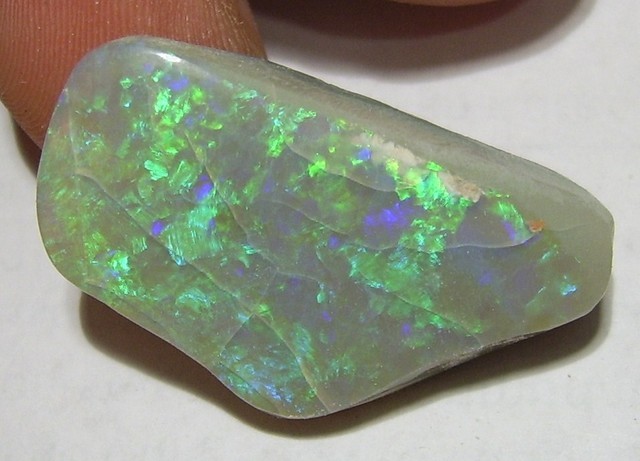 Many opal cutters will sell stones that have cracks or crazing in their opals. There is a major difference between the two and we will show you what it is. While there is nothing wrong with buying an Opal that is crazed or cracked it is important that the buyer is made aware before the purchase. If your Opal does have fracture lines in it or it has crazed do not put it in an ultrasonic cleaner as it may destroy the Opal.
Many opal cutters will sell stones that have cracks or crazing in their opals. There is a major difference between the two and we will show you what it is. While there is nothing wrong with buying an Opal that is crazed or cracked it is important that the buyer is made aware before the purchase. If your Opal does have fracture lines in it or it has crazed do not put it in an ultrasonic cleaner as it may destroy the Opal.
CRACKS

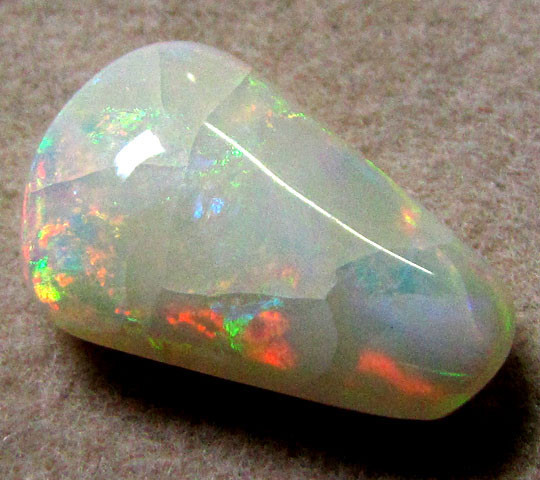
A crack can be a minor or major fault line. It can be on the surface or internal. If you see a line inside the opal and it reflects light then it is a crack in the stone. External cracks will decrease the value / price more than internal cracks.
Internal cracks have been shown to be stable and not continue to grow. Some Opal miners have stones with cracks inside them that have had no movement. External crack lines in a polished opal can be cut out but obviously this decreases the size and value of the Opal.
Cracked opals do not necessarily mean that they will fall apart. Many cracked opals will hold but the biggest problem is if an opal is cracked and in a ring, the everyday wear and tear and knocks will break the Opal. Many cracked opals are set as pendants for this reason and are able to be worn most of the time.
CRAZING
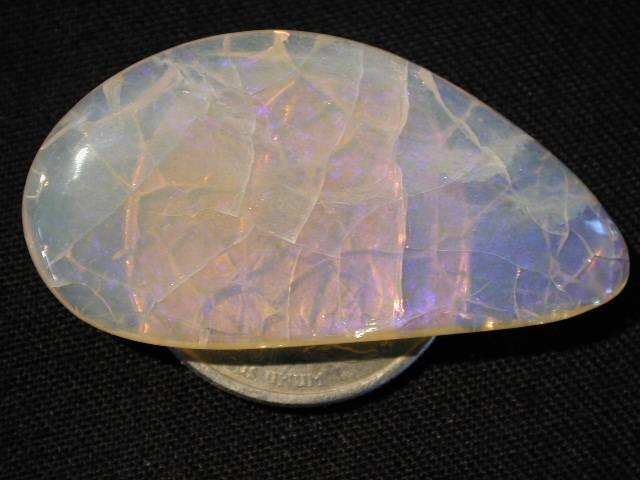
Crazing looks like multiple crack lines. Crazed opal is mostly kept as specimens or collectors pieces. They are not recommended for use in Jewelry. Crazed opals can be treated with Opticon which stabilises the Opal.

The image above is an Ethopian Opal with an inclusion. Notice there is no light reflection.
Inclusions are not cracks. Many opals contain natural inclusions. These can be air bubbles, vegetation matter and even potch.
AUSTRALIAN OPAL
Most Australian opal is very stable with black opal [N1] considered the most stable due to its smaller molecules. Generally Australian Opal that displays a crack is set at 10-20% of the value of a stable opal of similar qualities. It is estimated only around 1-3% of Australian opals crack but some opal fields are more susceptible than others.
Most Australian Opals contain 3-5% water. Generally the deeper the miner digs the more water content the Opal will have. Mines at Lighting Ridge go down to about 30 meters and the miner can gauge how stable the Opal is. As the potch goes from tough dry material to soggy wet potch then it is an indication of stable material. When they go deeper and the miner knows that this opal will obviously have more water content.
Most Australian opals are non porous and therefore they do not absorb water.
POTCH LINES

Some opals may show veins or spider web lines. These are not cracks but potch lines. It is easy for the cutter to check as crack lines reflect light but potch lines do not. Potch lines do decrease the value of the opal depending on the severity of lines. They do not generally effect the stability of the opal.
ETHIOPIAN OPAL
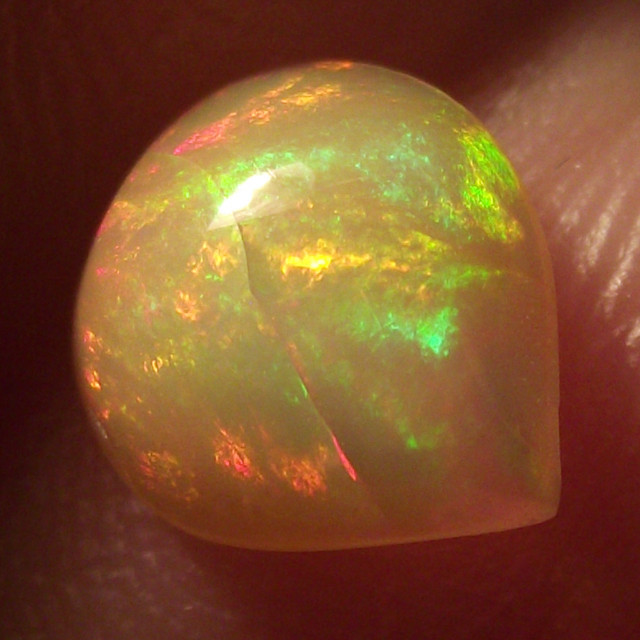

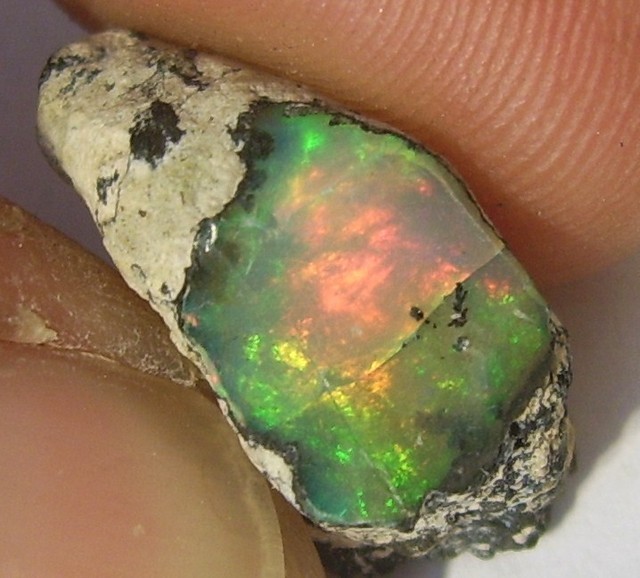
Ethiopian opal is a Hydrophane opal. Hydrophane opal absorbs water. When Ethiopian opal is dehydrated the base is more opaque. when the opal is hydrated it becomes more transparent. Transition time from hydrated to dehydrated can vary from minutes to days but most Opals do transition in a few hours.
FRACTURE TESTING ETHIOPIAN OPAL
Gemstones have been fractured or cleavage tested for centuries to test parting or cleavage in rough material. All major carving or cutting centres fracture test material before cutting or carving.
Even before modern testing techniques were invented rough material was still tested. During winter a wood fire would warm up a room and cold water was splashed repeatedly on the rough.
Today this basic process is still used for opals by soaking the opals in water and drying them in a warm but not hot environment. This processes can be repeated several times before the cutting process starts. Some opal with a small crack line will sometimes expand under water.
This process tests the stress points and cracks will appear on the weakest cleavage point. The opal is now ready for cutting and polishing to remove any visible cracks.
Fractures or crazing and cracks can appear as:
- granular sugary patterns
- smooth even breaks
- rough edged irregular breaks
Cutters obviously make decision to cut an opal after it has been fractured tested as to observe which side of the opal the fracture occurs on. This involves great skill and a professional cutter will cut according to the directions that have opened up when the fracture is complete.
It takes a cutter many years of experience to understand the best approach to cutting an opal. Master opal cutters will charge a percentage cutting fee for top stones from 3 to 5% and in most cases this is worth paying!
OPTICON STABILIZATION
Opticon is the most common form for stabilising opal. Immerse the stones in a canning style jar filled with enough Opticon to cover the stones and tighten the lid so water can not escape. Condensation can turn the resin cloudy.
- Place the jar in a ordinary slow cooker filled with enough water so the jar dose not float.
- Turn the heat up to 150-170 degrees Celsius (302 - 338 Fahrenheit)
- use a thermometer to check the temperature. We recommend using a kitchen meat thermometer.
- Cook for 24 hours
- Strain off the excess resin and place on tinfoil
Use a vacuum machine like the ones used to vacuum food bags. This sucks the air out of the bag.
- Vacuum for at least one hour.
- Using an artist style brush paint the stone with a weak mixture [40 to 1] of resin and hardener and re vacuum for 15 minutes.
- Remove any excess moisture with a acetone cloth.
- When the stones are no longer tacky polish or re-polish
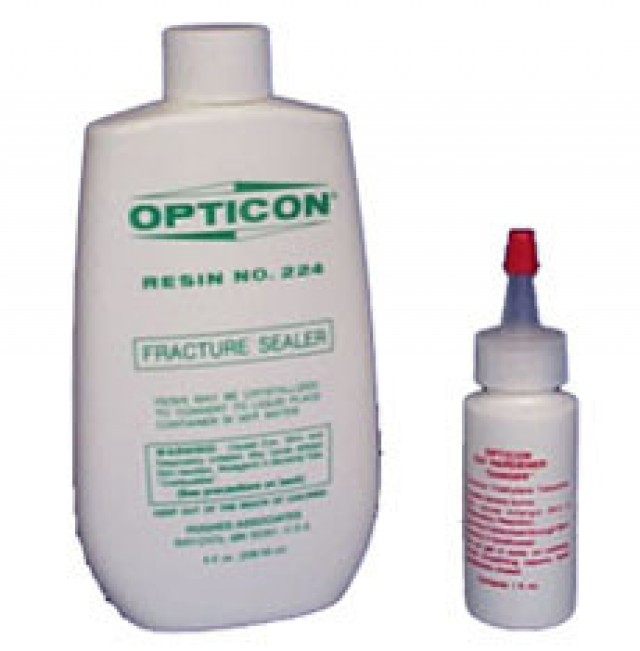

This 54.7 carat Harlequin pattern opal was sold for over $1,100. When it was cut 5 years ago it displayed crazed lines. The owner treated the stone with Opticon and sold it for around 10% of its value if it was untreated.
GLUES
You can also coat the stone with super glue and heat it under strong lights. The glass like covering over the stone gives it stability while it is polished.
BOULDER OPAL
Boulder opal is mostly formed on an ironstone backing and is stable. This ironstone can be A deep brown chocolate color to sandy ironstone with a light brown colour. Ironstone does help to keep the opal stable. Some crack lines may appear at a 45% degree angel but the opal can still be stable. Some boulder crystal opal may also display cracks. Koroit and Yowah opal fields are considered stable.
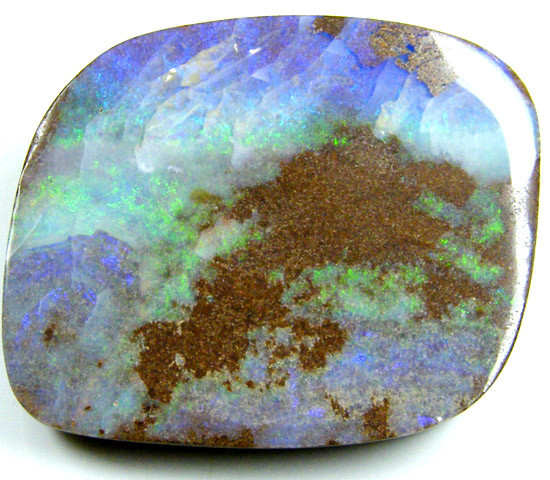

MEXICAN OPAL
Most Mexican opal is stable. Crazed or cracked opals can occur when the potch and opal cut in one piece as each has different pressure threshold.


U.S.A. OPALS
USA Opals are generally not considered to be stable and opals are mostly made in to Triplets or stabilised. USA opals tend to craze as water content can go up to 14%
BRAZILIAN OPALS
These are generally considered stable as the water content is mostly less than 5%. The opals are semi translucent to white translucent.
HONDURAN OPAL
Honduras opal on matrix is considered stable but some crystal formed on matrix may display crack lines
Browse Our Opals
Was this article helpful?
39 people found this article helpful
Opal Auctions
- Written - 13th Jan 2013
- Edited - 3rd Jan 2023

Did you know?

Opal Auctions Verified Sellers


















